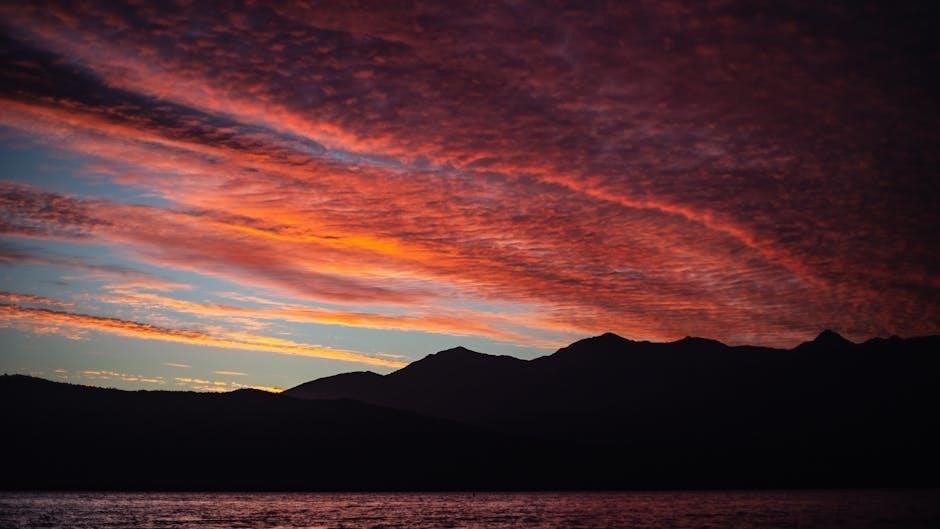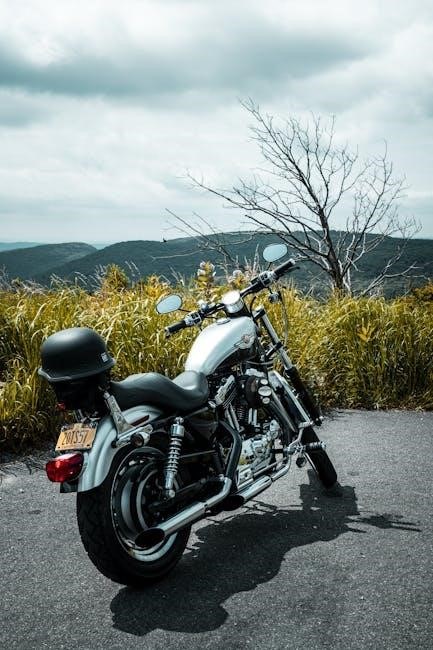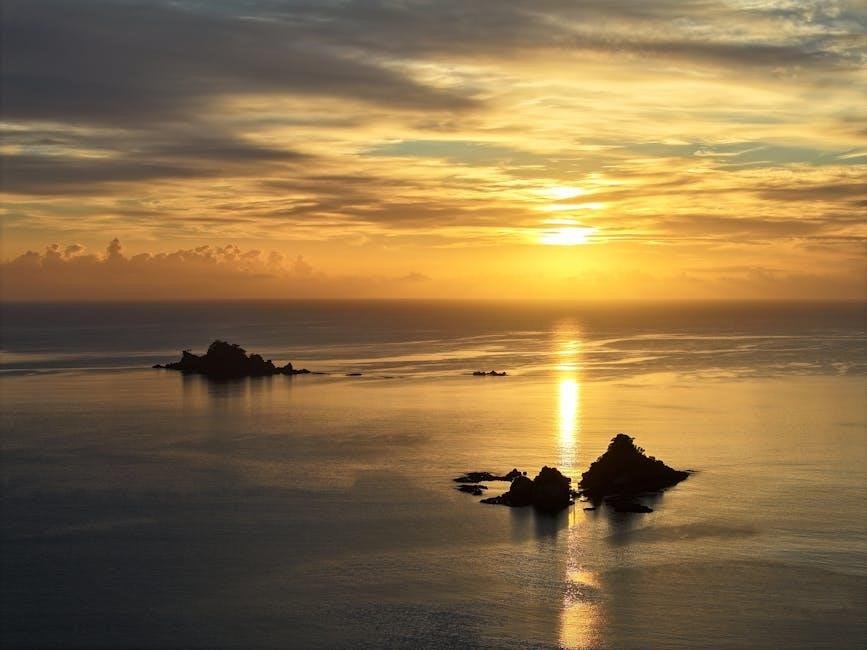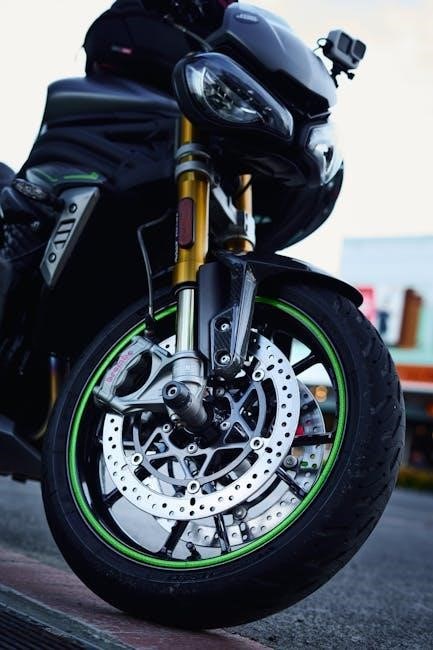
Self-guided bike tours in New Zealand offer unparalleled freedom to explore stunning landscapes at your own pace‚ with scenic routes‚ charming accommodations‚ and expert support ensuring an unforgettable adventure.
1.1 What Are Self-Guided Bike Tours?
Self-guided bike tours offer riders the freedom to explore New Zealand’s stunning landscapes at their own pace. These tours provide pre-planned routes‚ accommodation arrangements‚ and logistics support‚ allowing cyclists to focus on their riding experience without the structure of a guided group. Riders can choose their own itinerary‚ stop whenever they wish‚ and enjoy the flexibility to immerse themselves in the surroundings. This style of touring is ideal for those who value independence and want to connect deeply with the natural beauty of New Zealand.
1.2 Why Choose New Zealand for a Self-Guided Bike Tour?
New Zealand offers a diverse landscape of stunning natural beauty‚ from rugged mountains to pristine coastlines‚ making it a paradise for cyclists. With well-maintained trails like the Otago Central Rail Trail and Alps to Ocean Cycle Trail‚ riders can explore scenic routes tailored to all skill levels. The country’s compact size‚ bike-friendly infrastructure‚ and welcoming culture provide an ideal setting for self-guided tours. Experience unforgettable adventures with breathtaking views and a seamless blend of nature and adventure.
Popular Routes and Trails for Self-Guided Bike Tours
New Zealand boasts diverse cycling routes‚ from the scenic Otago Rail Trail to the challenging Alps to Ocean Cycle Trail‚ offering adventure and breathtaking landscapes for cyclists of all levels.
2.1 The Otago Central Rail Trail
The Otago Central Rail Trail is a 150km‚ grade-one route suitable for all fitness levels‚ offering a four-to-five-day adventure through historic tunnels‚ bridges‚ and charming countryside. This iconic trail follows a disused railway line‚ providing a scenic journey from Middlemarch to Clyde. Riders can enjoy stunning views of rugged mountains‚ vast plains‚ and picturesque villages. With bike-friendly accommodations and services along the way‚ it’s a perfect choice for self-guided cyclists exploring New Zealand’s natural beauty at their own pace.
2.2 Alps to Ocean Cycle Trail
The Alps to Ocean Cycle Trail is a 312km journey from the Southern Alps to the Pacific Ocean‚ offering breathtaking views of mountains‚ valleys‚ and coastal landscapes. Graded as easy to intermediate‚ it’s ideal for self-guided cyclists. Riders can enjoy the stark beauty of Mount Cook‚ the turquoise waters of Lake Pukaki‚ and the dramatic cliffs of the Waitaki River. With well-marked trails and support services available‚ this trail provides an unforgettable experience‚ blending adventure with New Zealand’s pristine natural beauty.
2.3 Tour Aotearoa Route
The Tour Aotearoa Route is a 3‚000km epic journey spanning New Zealand’s North and South Islands. Designed for self-guided cyclists‚ it offers diverse landscapes‚ from pristine beaches to rugged mountains. Starting at Cape Reinga and ending in Bluff‚ riders experience a mix of quiet roads‚ cycle trails‚ and scenic pathways. This challenging route attracts adventurous cyclists seeking a true test of endurance and immersion in New Zealand’s breathtaking natural beauty‚ with the freedom to plan their own itinerary and accommodations.

Planning Your Self-Guided Bike Tour
Planning a self-guided bike tour in New Zealand involves choosing the right bike‚ packing essentials‚ and creating a realistic itinerary. Proper preparation ensures a smooth‚ enjoyable journey.
3.1 Choosing the Right Bike for Your Tour
Selecting the right bike is crucial for a successful self-guided tour in New Zealand. Opt for a sturdy‚ reliable model suited to the terrain‚ such as a hybrid or mountain bike for off-road trails or a road bike for smoother paths. Ensure your bike is well-maintained‚ with proper gearing and brakes‚ to handle the diverse landscapes. A clean and serviced bike is also essential to meet New Zealand’s strict biosecurity requirements for incoming cycles.
3.2 Packing Essentials for a Self-Guided Bike Tour
Packing wisely is key to a seamless self-guided bike tour in New Zealand. Bring a reliable bike‚ basic tool kit‚ and spares like tires and brakes. Wear comfortable cycling gear‚ including padded shorts and layered clothing for varying weather. Carry a waterproof jacket‚ hydration pack‚ and reusable water bottles. Don’t forget essentials like a first-aid kit‚ sunscreen‚ and insect repellent. Include a map‚ GPS device‚ or smartphone for navigation. Pack lightweight camping gear if needed‚ and ensure your luggage is secure and easy to transport. Always check local regulations for prohibited items.
3.3 Creating a Realistic Itinerary
Creating a realistic itinerary for your self-guided bike tour in New Zealand involves balancing riding time with sightseeing and rest. Start by defining your tour’s purpose and duration‚ then consider your fitness level and experience. Allow time for unexpected delays and flexibility to explore attractions. Include rest days to recover and enjoy local culture. Research seasonal factors like weather and trail closures to optimize your route. Map out daily stops and activities to ensure a smooth‚ enjoyable journey tailored to your preferences and pace.

Accommodation Options for Self-Guided Bike Tours
Self-guided bike tours in New Zealand offer diverse accommodation options‚ including bike-friendly hotels‚ charming lodges‚ and scenic campsites‚ catering to all preferences and budgets for a convenient and immersive experience.
4.1 Bike-Friendly Hotels and Lodges
Bike-friendly hotels and lodges in New Zealand are tailored to meet cyclists’ needs‚ offering secure storage‚ maintenance support‚ and convenient access to popular trails. These accommodations range from cozy boutique lodges to modern hotels‚ ensuring a comfortable stay after a day of riding. Many are located near iconic routes like the Otago Central Rail Trail and Alps to Ocean Cycle Trail‚ providing easy access to scenic paths. They often cater to various budgets and preferences‚ offering amenities such as laundry services‚ hearty meals‚ and local knowledge to enhance your cycling experience.
4.2 Camping Options Along the Trails
Camping is a popular choice for self-guided bike tours in New Zealand‚ offering an immersive connection with nature. Many trails‚ such as the Otago Central Rail Trail and Alps to Ocean‚ have nearby campsites ranging from basic Department of Conservation (DoC) sites to luxury options. These campsites provide essential amenities like toilets and water‚ while some offer kitchen facilities and showers. Camping allows cyclists to stay close to the action‚ waking up to stunning scenery and enjoying the tranquility of New Zealand’s outdoors. Bookings can often be made in advance‚ ensuring a smooth journey.
Safety Tips and Precautions
Always wear reflective gear‚ follow traffic rules‚ and carry an emergency kit. Stay hydrated‚ use GPS for navigation‚ and trust your instincts. Check bike condition daily.
5.1 Staying Safe on New Zealand Roads
Staying safe on New Zealand roads requires vigilance. Cyclists should wear high-visibility clothing‚ follow traffic rules‚ and use designated bike lanes where available. Always carry an emergency kit‚ including a first-aid kit and a phone. Be mindful of narrow‚ winding roads and weather conditions. Defensive cycling is key—anticipate potential hazards and stay alert. Ensure your bike is well-maintained‚ with proper lighting and brakes. Trust your instincts and avoid risky routes. Stay visible‚ communicate with drivers‚ and enjoy the ride responsibly.
5.2 Emergency Preparedness and First Aid
Emergency preparedness is crucial for self-guided bike tours. Always carry a first-aid kit‚ a phone‚ and know the location of the nearest medical facility. Familiarize yourself with basic first aid techniques‚ such as treating cuts and sprains. Ensure your bike is in good condition to prevent mechanical failures. Carry a spare tube‚ tools‚ and a pump. Inform someone about your itinerary and expected return time. Be prepared for changing weather conditions and carry emergency snacks and water. Stay informed about local emergency services and keep essential contacts handy.
Budgeting for Your Self-Guided Bike Tour
Budgeting for a self-guided bike tour requires careful planning to cover bike rentals‚ accommodations‚ food‚ and activities‚ ensuring a smooth and enjoyable adventure in New Zealand.
6.1 Estimating Costs for Equipment and Accommodation
Estimating costs for equipment and accommodation is crucial for budgeting your self-guided bike tour. Bike rentals or purchases‚ along with accessories‚ can range from $500 to $2‚000. Accommodation varies widely‚ with budget-friendly camping options starting at $10 per night and mid-range lodges costing $80–$150. Luxury stays can exceed $300 nightly. Additionally‚ luggage transport services may add $40–$70 daily. Planning ahead and researching options helps balance costs effectively for a seamless New Zealand adventure.
6.2 Budgeting for Food and Activities
Budgeting for food and activities requires careful planning to ensure a balanced and enjoyable trip. Eating out in New Zealand can range from $15–$30 per meal‚ while self-catering options like groceries may cost $60–$100 per week. Activities such as attraction fees or guided tours can add $10–$30 per person. Allocating $30–$50 daily for miscellaneous costs is advisable. Prioritize your spending based on preferences to enjoy the scenic beauty and cultural experiences without overspending‚ ensuring a memorable self-guided bike tour.

How to Book a Self-Guided Bike Tour
Research reputable operators‚ compare itineraries‚ and review pricing. Contact local experts to tailor your trip‚ ensuring a seamless and enjoyable self-guided cycling experience in New Zealand.
7.1 Finding Reputable Tour Operators
Researching reputable tour operators is essential for a smooth self-guided bike tour experience in New Zealand. Look for operators with a proven track record‚ positive reviews‚ and certifications. Many companies specialize in tailored itineraries‚ offering bike rentals‚ luggage transfers‚ and accommodation bookings. Check websites like the Great Rides App or local cycling forums for recommendations. Ensure the operator provides detailed route maps and emergency support. Reading testimonials from past cyclists can also help you make an informed decision and ensure a reliable service.
7.2 Making Reservations and Finalizing Logistics
Making reservations and finalizing logistics for your self-guided bike tour in New Zealand is crucial for a seamless experience. Start by securing bookings for accommodations and bike rentals well in advance‚ especially during peak seasons. Ensure you receive confirmation emails with detailed itineraries and maps. Verify that your chosen operator provides luggage transfers and emergency support. Double-check all arrangements‚ including transportation to and from trailheads‚ to avoid last-minute issues. A well-organized plan ensures you can focus on enjoying your ride without stress.

Testimonials and Reviews from Past Participants
Past participants rave about the unforgettable experiences on New Zealand’s self-guided bike tours‚ highlighting the stunning landscapes‚ seamless logistics‚ and freedom to explore at their own pace.
8.1 Real Stories from Self-Guided Bike Tourists
Many cyclists share inspiring tales of their self-guided bike tours in New Zealand‚ describing breathtaking landscapes and the freedom to explore at their own pace. For instance‚ one couple highlighted the Otago Central Rail Trail‚ praising its well-marked paths and charming accommodations. Another rider emphasized the thrill of completing the Alps to Ocean Cycle Trail‚ calling it a life-changing adventure. These stories often mention the seamless logistics provided by tour operators‚ allowing riders to focus solely on the journey and create lasting memories.
8.2 Lessons Learned and Tips from Experienced Riders
Experienced cyclists recommend thorough itinerary planning‚ regular bike maintenance‚ and packing lightweight essentials. Many emphasize the importance of testing gear before the trip and choosing routes that match fitness levels. Weather preparedness is crucial‚ as New Zealand’s climate can be unpredictable. Riders also suggest downloading trail apps for navigation and booking accommodations in advance‚ especially during peak seasons. Lastly‚ allowing flexibility in plans ensures a more enjoyable and stress-free adventure.